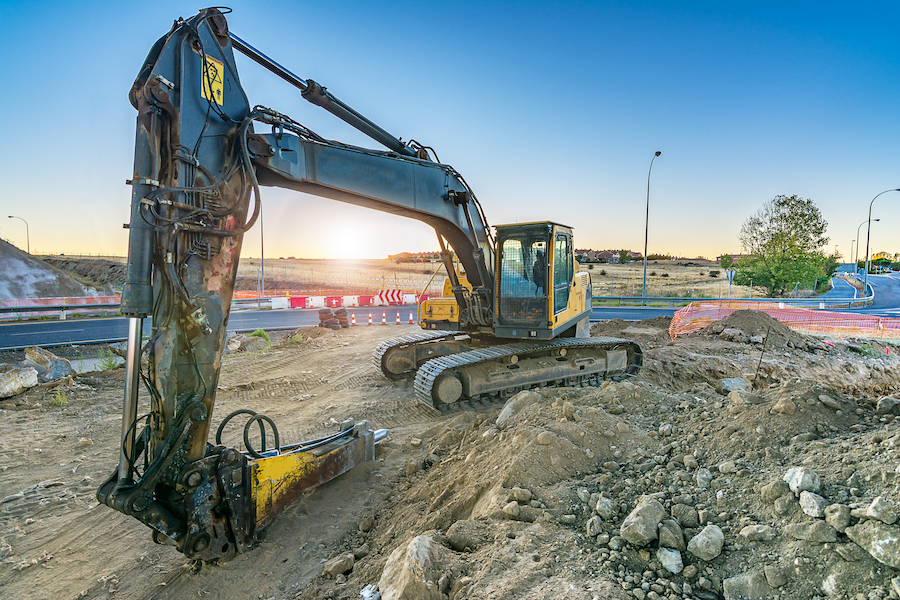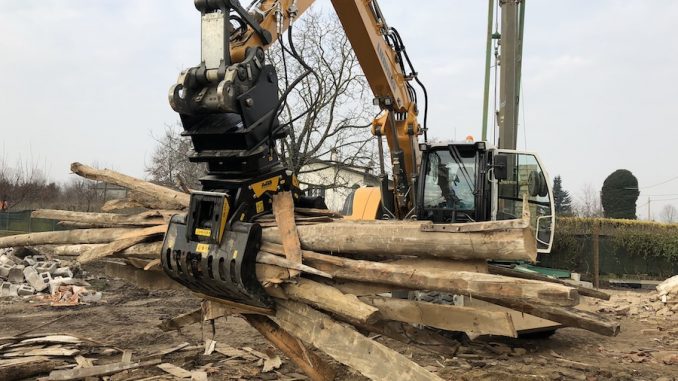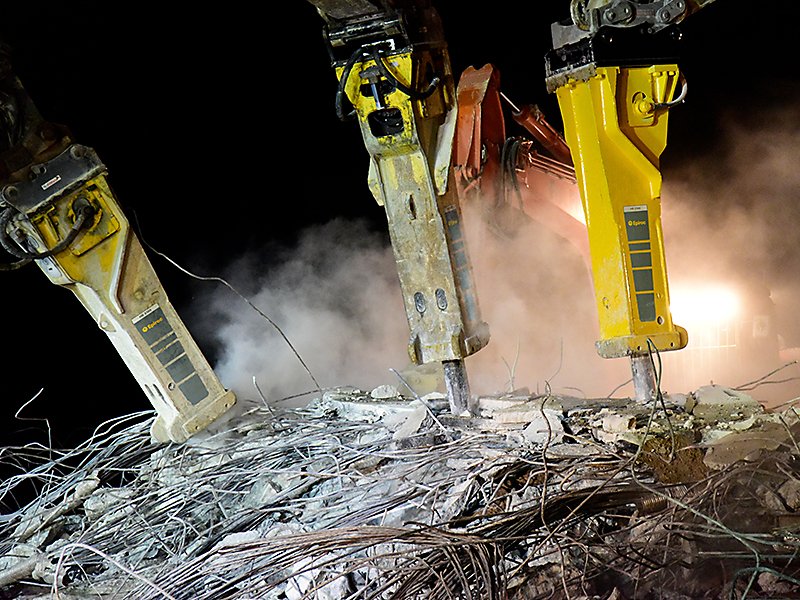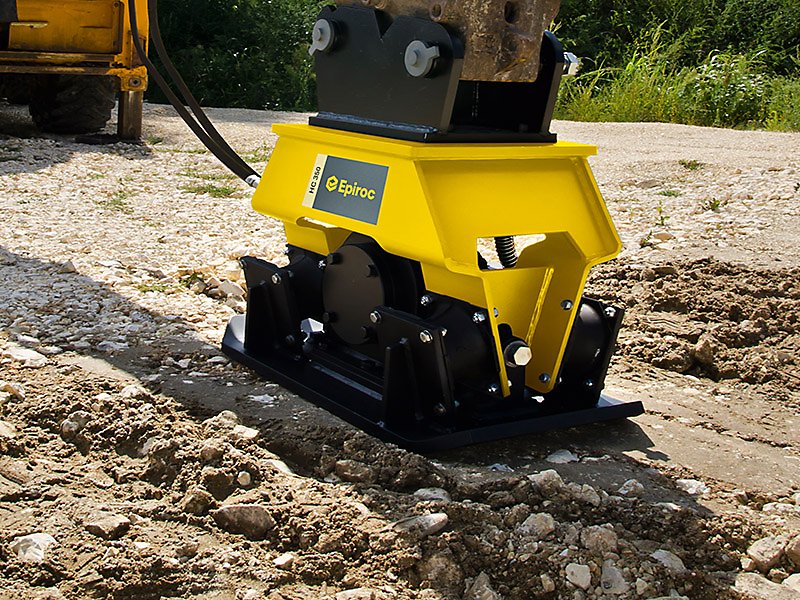View complete article here.
The only thing as crucial as the excavator itself is the attachment that is utilized with it. With an enclosed cab situated on top of a wheeled or tracked undercarriage, the excavator’s most prominent feature is its long, crooked arm protruding from the cab, which typically has a bucket on the end.
Excavators are often brought in for biggest and dirtiest jobs like demolition or dredging a river. They are, of course, also relied on for excavating foundations, as well as holes and trenches. The excavator is also a vital piece of equipment in the mining and metals industry, and is used across industries for tasks such as installing pipes and moving heavy materials.
Types of Excavators
Before heading out to invest in an attachment, you want to make sure you know the type of excavator you have.
Compact
As the smallest excavator option, this can lift items weighing no more than 6 tons. Because of its compact size, it’s ideal for small-scale projects like sewer repairs.
Midi
A midi is more powerful than a compact excavator, but it’s still good for small tasks. It can lift around 6-10 tons and has impressive maneuverability.
Standard
Perfect for commercial construction, a standard excavator can move 10-45 tons and can attach to a hydraulic system so tools can be fastened to it.
Large
As the biggest and most durable option, a large excavator lifts over 45 tons and is built for heavy-duty projects. Due to its massive size and weight, it usually needs trucks to transport it around.

Tips for Choosing the Right Excavator Attachment
Brainstorm Ahead of Time
There are a handful of different excavator attachments available, each of which has their own unique qualities. By carefully researching and writing down what you want in one, you’ll be able to find the perfect option for the job. Some things to consider are the attachment’s tipping load, size, and the type of job site you plan to use it at.
Its Efficiency
Efficiency is key for an attachment. Otherwise, it would lead to a loss of time and money.
Attachments can help with making a job go faster, but only if they are designed for your type of excavator. Some things to look at to see how productive the attachment will be is if it features sharp teeth at the end to grab onto dirt and rocks. You’ll also want to make sure that the attachment is made of a strong material, like steel, which can withstand heavy-duty conditions.
Always Check the Size
Picking the wrong size attachment can bring multiple problems. For instance, while a large option might seem like it would make a job go by faster, it can actually slow things down. A large attachment might also not fit properly on an excavator and could damage it.
Smaller attachments could also be too tiny for some jobs and result in a significant mess and taking more time to complete the task. To prevent this, always check the recommended attachment size for your excavator.
Check the Hydraulic Specifications
If you’re using an excavator with a hydraulic capability it’s important to make sure the attachment will work with it. Sometimes certain attachments, like standard ones, don’t function correctly with a hydraulic cylinder or might need to be used with two rather than one.
Research Soil Conditions the Attachment Works In
Soil is composed of various materials, like clay, sand, and shale. Not every excavator can work safely with them. If you plan to dig in coarse areas, you’ll want to make sure to use a severe-duty option. This type is built with anti-abrasive materials like rolled wear straps and front wear pads.
Examine the Attachment’s Durability
Excavator attachments do tough work and need to be made of quality materials to withstand heavy usage. One thing you’ll want to check for is wear strips that line the back and sides of it. These help to protect the attachment from scratches and dents.
You’ll also want to make sure the attachment is made with anti-corrosive pieces. An option that doesn’t have this feature will end up rusting because it comes into constant contact with minerals and water that can wear it down.
See if You Can Attach it to a Quick Coupler
A quick coupler lets you quickly change the attachment at the end of an excavator without manually doing it. This feature will not only help you to quickly adjust attachments, but encourage you to be more productive.
Test the Attachment Out
One of the best ways to tell whether or not an attachment will work well for you is to test it out. You’ll be able to see firsthand how the installation process goes, if it’s easy to maneuver, and if it will work well for the project.
Know the Different Types
Knowing the different attachment types will help you to narrow down your search much faster.
Bucket
As one of the most common attachments, a bucket features a deep middle that can hold large amounts of dirt and rocks. While buckets will vary in their width and purpose, most usually have sharp teeth on the edge to help with cutting into surfaces.
Flip Screen offers a variety of screening bucket options.
Hammer
The hammer attachment is built to destroy rough materials, like concrete, and can be attached to bits such as chisels and asphalt cutters.
Auger
Augers dig deep holes thanks to their powerful spiral piece. As the auger twists into the ground, its spiral design makes dirt fly out of the hole. This type of attachment is best for building wells or planting large trees.

Grapple
Grapples act like a claw and will open up and then clamp onto the object. It’s one of the most durable attachments and can lift most materials, but because of its overlapping teeth, sometimes small portions of dirt and rocks can slip through. While similar to a thumb attachment, grapples can hold more substances at once making them a bit more productive.
Rake
A rake attachment will slide along the ground and pick up everything from chunks of concrete to logs. Most are constructed out of steel so they are extremely durable and won’t scratch easily.
Thumbs
This attachment works like a hand and features two claws that open and close. You can operate these claws to tighten their grip around an object and then move it.

Rock Breakers
As their name suggests, rock breakers crush rocks, concrete, and asphalt. They’re ideal for digging trenches and road construction.
Post Hole
A post hole attachment digs holes for structural foundations and large plants, like trees and bushes.

Compactors
Compactors allow you to dig deep trenches without needing manual labor. They feature shock mounts that help to evenly distribute vibrations so they stay stable.
Multi-Processors
This excavator attachment has powerful jaws so it can lift and smash everything from logs to steel. They’re mainly used for demolitions because of their impressive strength.
This is just a sample of the numerous attachment choices available. However, the ones listed above tend to be the most popular and versatile options.
How can I determine the right size of an excavator attachment for my project?
Always check the recommended attachment size for your excavator to prevent compatibility issues and optimize efficiency.
What are the key considerations for ensuring the durability of an excavator attachment?
Check for wear strips, anti-corrosive materials, and overall construction quality to ensure the excavator attachment can withstand heavy usage and environmental conditions.













































